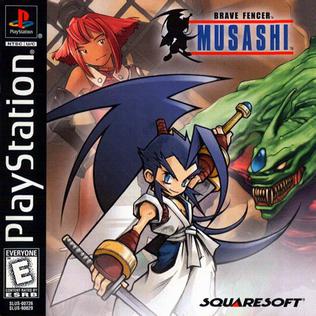
Brave Fencer Musashi is an action role-playing video game developed and published by Square in 1998 for the PlayStation home console. The game involves real-time sword-based combat in a 3D environment; it also features segments of voiced over dialogue and role-playing game elements such as a day-night cycle and resting to restore energy.
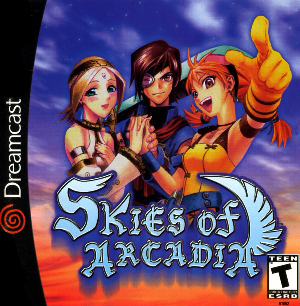
Skies of Arcadia is a 2000 role-playing video game developed by Overworks and published by Sega. Players control Vyse, a young air pirate, and his friends as they attempt to stop the Valuan Empire from reviving ancient weapons with the potential to destroy the world. The game was released for the Dreamcast in late 2000 and was ported to the GameCube in 2003.

Silent Scope is an arcade game created in 1999 by Konami. The game puts the player in the shoes of a sniper during a series of terrorist incidents. It is the first in the Silent Scope series.

World of Dragon Warrior: Torneko: The Last Hope is a role-playing video game for the PlayStation. The game was co-developed by Chunsoft and Matrix Software and published by Enix in both Japan and North America in 1999 and 2000 respectively. In Japan, the game was ported to the Game Boy Advance in 2001.

WWF SmackDown! Just Bring It, known in Japan as Exciting Pro Wrestle 3, is a professional wrestling video game developed by Yuke's, and published by THQ for PlayStation 2, and was released in November 2001. It is the third game in the WWF SmackDown! series, based on the World Wrestling Federation (WWF) professional wrestling promotion, the sequel to WWF SmackDown! 2: Know Your Role, the first game in the series to be released on the PlayStation 2 console, and the last game in the series to be released under the "WWF" name.
Fighter Maker(格闘ツクール, Kakutō Tsukūru) is a series of games for PlayStation consoles and Microsoft Windows. It features a robust character creation system, letting players even create animations. There are two versions of the games, Fighter Maker and 2D Fighter Maker.

Fantavision, sometimes stylized as FantaVision, is a puzzle video game developed by Japan Studio and published by Sony Computer Entertainment for the PlayStation 2 (PS2). The game's objective is to use a cursor to select three or more launched fireworks of the same color in a row and then to detonate them to increase the player's score. Used in conjunction with various power-ups, the resulting explosions can ignite and chain together even more flares for additional points.

Armored Core 2 is a 2000 third-person shooter mecha video game developed by FromSoftware for the PlayStation 2. It is the fourth entry in the Armored Core series and an indirect sequel to Armored Core: Master of Arena. In North America, Armored Core 2 was a launch title for the PlayStation 2. A direct sequel, Armored Core 2: Another Age, was released in 2001 for the PlayStation 2.

Armored Core 3 is a 2002 third-person shooter mecha video game developed by FromSoftware for the PlayStation 2. It is the sixth entry in the Armored Core series. Armored Core 3 acts as a reboot for the franchise and begins a storyline that would continue through Armored Core: Last Raven. In 2009, Armored Core 3 was ported to the PlayStation Portable.

Silent Line: Armored Core, known in Japan as Armored Core 3: Silent Line, is a 2003 third-person shooter mecha video game developed by FromSoftware for the PlayStation 2. It is the seventh entry in the Armored Core series and a direct sequel to 2002's Armored Core 3. In 2009, Silent Line: Armored Core was ported to the PlayStation Portable.

Armored Core: Nexus is a 2004 third-person shooter mecha video game developed by FromSoftware for the PlayStation 2. It is the eighth entry in the Armored Core series and a sequel to 2003's Silent Line: Armored Core. Unlike Silent Line, Nexus is not an expansion but rather a full-fledged sequel.
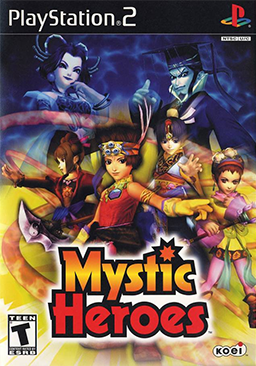
Mystic Heroes is a hack and slash video game developed by Koei. The game is loosely based on Investiture of the Gods, a Chinese supernatural novel about the fall of the Shang Dynasty and the rise of the Zhou Dynasty.
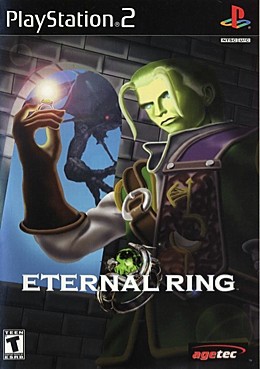
Eternal Ring is a first-person action role-playing game developed by FromSoftware and published in North America by Agetec. Released in 2000, it was a launch title for the PlayStation 2 both in Japan and North America. The game was made available via emulation for the PlayStation 4 in North America on May 23, 2017.

Ephemeral Fantasia, known in Japan as Reiselied: Ephemeral Fantasia, is a 2000 role-playing video game developed by Konami Computer Entertainment Japan and published by Konami for the PlayStation 2. The game was released in Japan on August 10, 2000, in North America on July 9, 2001 and in Europe on September 7, 2001.
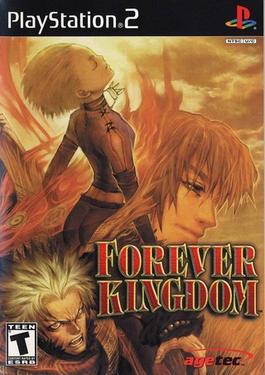
Forever Kingdom, known in Japan as Evergrace II, is an action role-playing game released for the PlayStation 2 by FromSoftware. It is the prequel to Evergrace.

Pro Evolution Soccer 2, also known as World Soccer: Winning Eleven 6 outside of Europe, is the second installment of Konami's Pro Evolution Soccer football simulation video game series. The Japanese release was succeeded by an updated and improved version called World Soccer: Winning Eleven 6 Final Evolution.

Innocent Life: A Futuristic Harvest Moon, also known as Harvest Moon: Innocent Life, is a 2006 farming simulation video game for the PlayStation Portable (PSP). It is a spin-off of the Story of Seasons series of games, and was released on April 27, 2006, in Japan and in 2007 for the rest of the world.
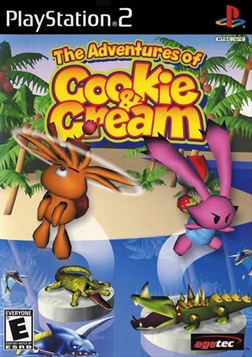
The Adventures of Cookie & Cream, known as Kuri Kuri Mix in Japan and Europe, is an action-adventure video game developed by FromSoftware for the PlayStation 2 released in 2000. In 2007, it was ported to the Nintendo DS as Cookie & Cream.
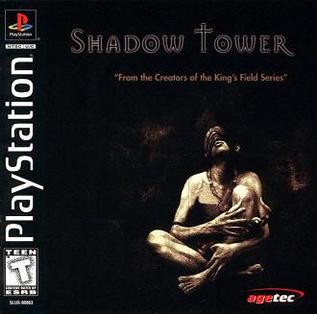
Shadow Tower is a 1998 action role-playing video game developed by FromSoftware for the PlayStation. The game was originally released in Japan by FromSoftware on June 25, 1998 and in North America by Agetec on November 19, 1999. Shadow Tower shares many similarities with the King's Field series of video games. A sequel, Shadow Tower Abyss, was released for the PlayStation 2 exclusively in Japan.

King's Field IV, released in North America as King's Field: The Ancient City, is an action role-playing video game developed by FromSoftware for the PlayStation 2 in 2001. It is the fourth and final game in the King's Field series. It was released in North America by Agetec in 2002 and in Europe by Metro3D in 2003.


















